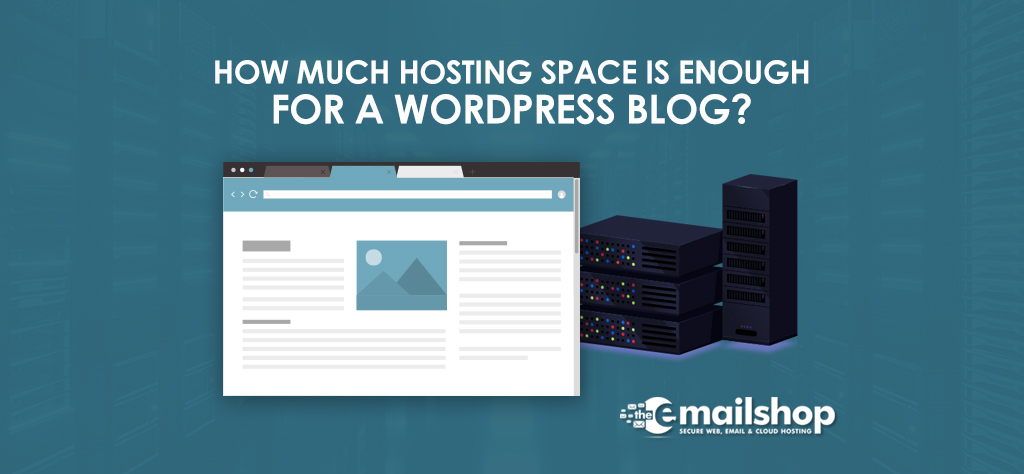A blog can be launched with as little as 100 MB of space. However, hosting companies like Bluehost, Siteground, and Hostinger offer 10 to 25 GB of hosting space. The space in your blog expands as you add more content. The amount of space on your blog will grow as you add content over time, but there are several contributing elements.
How do I use a fully-hosted WordPress blog?
Choose a web host: A variety of web hosts provide WordPress hosting. You can pick one based on your requirements and financial situation.
Register a domain name: You must choose a web hosting company first, then register a domain name for your blog. Your domain name serves as your blog’s internet address (e.g. www.yourblogname.com). A domain name can be registered either through your web hosting company or a different domain registrar.
Install WordPress: WordPress can typically be installed with one click through most web hosts. Find the option to install WordPress after logging into your hosting account and then follow the instructions.
Choose a theme: Both free and premium themes for WordPress are widely accessible. Pick a theme that complements the subject and design of your blog.
Customize your blog: When a theme is installed you can change it by including widgets, menus, and other features.
Create content: You are now prepared to begin producing material for your blog. WordPress provides a simple user interface for building pages and articles for blogs.
Promote your blog: As a final step, you should promote your blog to attract readers. This can be done using social media, SEO, and other marketing techniques.
Storage requirements based on blog website specialty.
The amount of storage required for a blog website will vary depending on the blog’s target audience, how frequently the content is updated, the media types used (such as text, photos, videos, and audio), and the anticipated visitor volume. Based on popular blog niches, the following are some basic guidelines for storage requirements.
Personal blog: A personal blog often includes text, photographs, and sporadic audio or video. If you frequently add new posts to your blog, you might require at least 1 GB of storage capacity to fit your media assets.
Food Blog: A food blog often includes both text content and high-quality pictures and videos of recipes. You might require several gigabytes of storage space, depending on how frequently you update your blog and how many recipes you upload.
Travel Blog: A travel blog often includes both writing and numerous, high-quality photographs and videos of the places visited. You might want several gigabytes of storage space to handle your media files if you constantly update your blog with fresh content.
Fashion Blog: A fashion blog often includes both text content and high-quality pictures and videos showcasing attire and fashion accessories. You can require several gigabytes of storage space, depending on how frequently you update your site and the number of fashion goods you post.
Technology blog: A technology blog often includes a lot of text content in addition to pictures, photographs, and videos showcasing devices and applications. You might want several gigabytes of storage space to handle your media files if you constantly update your blog with fresh content.
How much hosting space is enough for a WordPress blog
The number of posts, pages, and media files (such as photographs and videos) that will be posted is among the variables that affect how much hosting space is required for a WordPress site. A modest WordPress site with one or two posts and a few media files can typically be hosted on a shared hosting plan with 1-2GB of space, however larger blogs with more material and media may need a plan with 10GB or more. To prevent running out of space, it’s crucial to often evaluate your consumption and update your plan as needed.
Text: This is the core idea that serves as the foundation for a blog post. But as you are all aware, writing takes up the least amount of space. A typical blog post with 2000 words of content will require 5 KB to 10 KB at most.
Image: If you want to write a blog post that is informative, photographs and pictures are a huge assistance. Additionally, it increases blog traffic and aids in SEO. The usage of photos without optimization or compression is common among those who are ignorant of SEO and content authoring. An excellent blog image should be larger than 1200 px by 700 px and weigh between 100 and 200 KB.
Video: When using shared hosting for your website Uploading the videos to your hosting servers is not advised. Your website will load extremely slowly, and it will also take up the designated space. When you have dedicated servers or cloud hosting, only upload your videos. An average 3-minute video might be 150-300 Mb in size.
Other media Files: Media files like GIF images and PNG files can occasionally be used, although they take up more room. Avoid using extraneous images in your postings if there is no requirement for them.
You May Also Like To Read: Best Known VPS Hosting for WordPress
Final Thoughts
A basic hosting package with 5 to 50 GB of storage should be plenty for the majority of regular blog articles, however, the amount of hosting space required for a WordPress blog article varies based on the content and other criteria.
For Discount and Offers, Visit our Official Twitter Page









